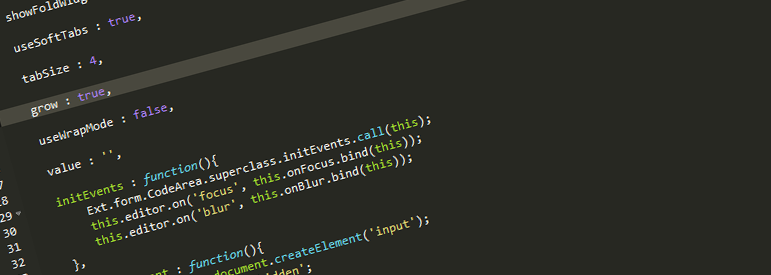The Ace Editor
I embedded the Ace editor into my team’s current project - Visual Interpreter, a JavaScript interpreter tool for visualizing in-memory model values and scopes as well as doing inline code evaluation. This is the first post about using Ace for this project. The other two blogs are:
The Ace Editor’s 1
setSelectionRange()
1 | setSelectionRange() |
I needed to implement selection highlighting in Ace. However, the arguments of Ace’s built-in 1
setSelectionRange()
1
Range
1
Range
Here’s an example:
var example = function() {
return 'This is an example';
};
example();In the example, the whole function has character indices of start:0 and end:71. However, the Ace 1
Range
1
Range
Converting Character Indices
The Problem
What I had:
- The start and end character indices of the text to be selected
What I needed:
- The start row and column indices as well as the end row and column indices of the text to be selected
Finding the Last Column Index of Each Row
The first thing I wanted to do was to find the column index of the last character in each row so that, given any single character index, I could use that last column index to find out which row that character would be in.
I added the following code in the ace.js file under the 1
setSelectRange
this.getLastColumnIndex = function(row){
return this.session.getDocumentLastRowColumnPosition(row,0).column;
};Then I found all the column indices for all the rows by iterating through each row. I saved the accumulation of last column indices in an array called lastColumnIndices. I used the 1
session.getLength()
this.getLastColumnIndices = function(){
var rows = this.session.getLength();
var lastColumnIndices = [];
var lastColIndex = 0;
for (var i = 0; i < rows; i++){
lastColIndex += this.getLastColumnIndex(i);
if (i>0) { lastColIndex += 1; }
lastColumnIndices[i] = lastColIndex;
}
return lastColumnIndices;
};In the example above, the lastColumnIndices would end up being the array [26, 57, 60, 71].
Finding the Row and Column Indices for Each Single Character Index
Now that I had the character index ranges for each row I could find the row and column indices associated with any given single character index. I just needed to test whether the character index was between two accumulated last column index in the lastColumnIndices array.
this.getRowColumnIndices = function(characterIndex) {
var lastColumnIndices = this.getLastColumnIndices();
if (characterIndex <= lastColumnIndices[0]) {
return {row: 0, column: characterIndex};
}
var row = 1;
for (var i = 1; i < lastColumnIndices.length; i++) {
if (characterIndex > lastColumnIndices[i]) {
row = i+1;
}
}
var column = characterIndex - lastColumnIndices[row-1] - 1;
return {row: row, column: column};
};Selecting the Appropriate Code in the Ace Editor
Now that these utility functions have been created, it’s fairly straightforward to create a version of 1
setSelectionRange()
1
Range
1
setSelectionRangeIndices()
this.setSelectionRangeIndices = function(start, end, reverse) {
var startRowColumn = this.getRowColumnIndices(start);
var endRowColumn = this.getRowColumnIndices(end);
this.setSelectionRange({
start: {
row: startRowColumn.row,
column: startRowColumn.column
},
end: {
row: endRowColumn.row,
column: endRowColumn.column
}
}, reverse);
};Then from within my code I could call this function like below where start is the single character index of the starting position and end is the single character index of the ending position:
editor.getSelection().setSelectionRangeIndices(start, end);